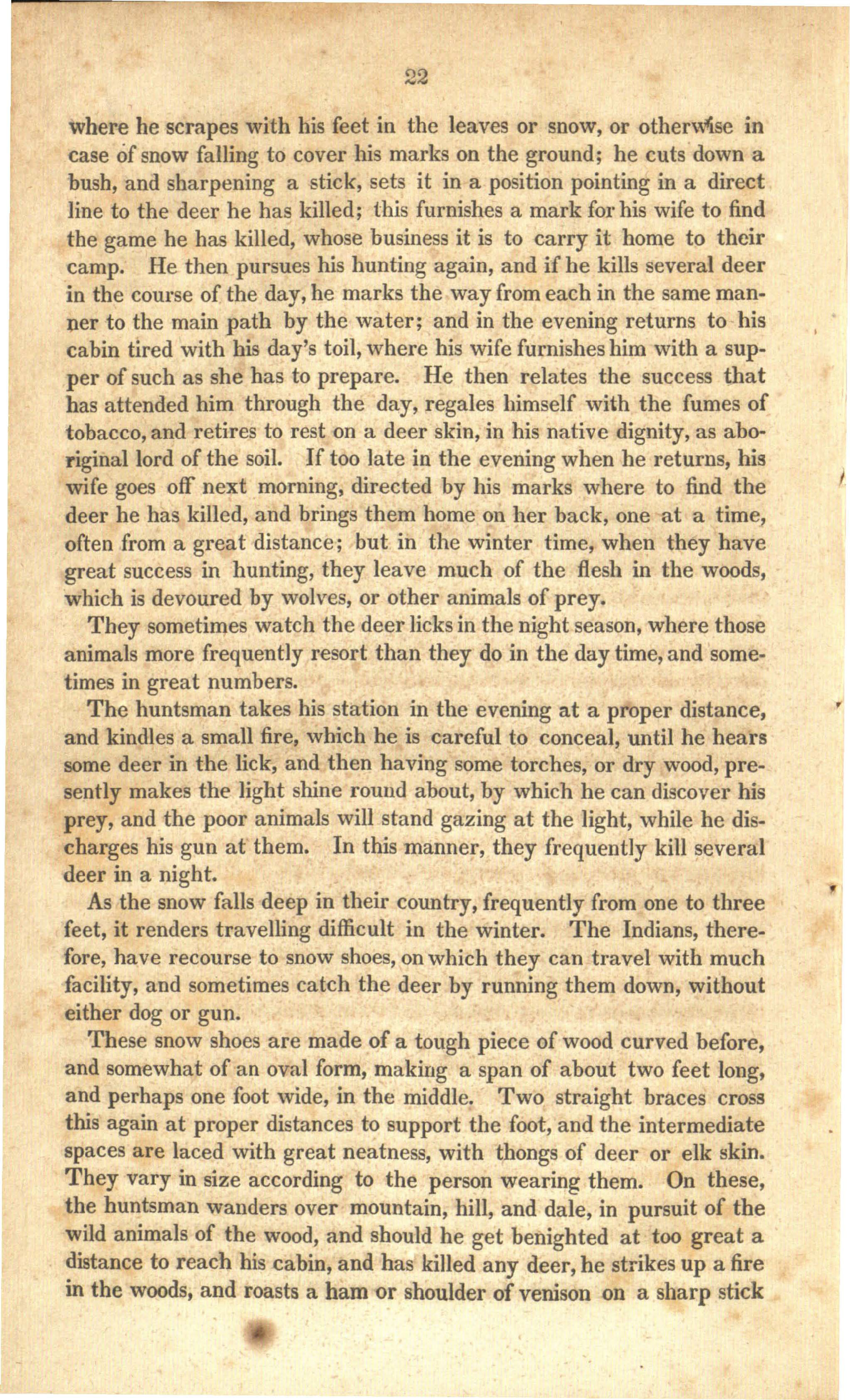where he scrapes with his feet in the
leaves or snow, or otherwise in
case of snow falling to cover his marks on
the ground; he cuts down a
bush, and sharpening a stick, sets it in a
position pointing in a direct
line to the deer he has killed; this
furnishes a mark for his wife to find
the game he has killed, whose
business it is to carry it home to their
camp. He then pursues his hunting
again, and if he kills several deer
in the course of the day, he marks the
way from each in the same man-
ner to the main path by the water; and in the
evening returns to his
cabin tired with his day's toil, where his wife
furnishes him with a sup-
per of such as she has to prepare. He then relates
the success that
has attended him through the day, regales himself with the
fumes of
tobacco, and retires to rest on a deer skin, in his native
dignity, as abo-
riginal lord of the soil. If too late in the evening when
he returns, his
wife goes off next morning, directed by his marks where to
find the
deer he has killed, and brings them home on her back, one at a
time,
often from a great distance; but in the winter time, when they
have
great success in hunting, they leave much of the flesh in the
woods,
which is devoured by wolves, or other animals of prey.
They sometimes watch the deer licks in the night season, where those
animals
more frequently resort than they do in the day time, and some-
times in
great numbers.
The huntsman take his station in the evening at a proper distance,
and
kindles a small fire, which he is careful to conceal, until he hears
some
deer in the lick, and then having some torches, or dry wood, pre-
sently
makes the light shine round about, by which he can discover his
prey, and
the poor animals will stand gazing at the light, while he dis-
charges his
gun at them. In this manner, they frequently kill several
deer in a
night.
As the snow falls deep in their country, frequently from one to three
feet,
it renders travelling difficult in the winter. The Indians, there-
fore,
have recourse to snow shoes, on which they can travel with much
facility,
and sometimes catch the deer by running them down, without
either dog or
gun.
These snow shoes are made of a tough piece of wood curved before,
and
somewhat of an oval form, making a span of about two feet long,
and perhaps
one foot wide, in the middle. Two straight braces cross
this again at
proper distances to support the foot, and the intermediate
spaces are laced
with great neatness, with thongs of deer or elk skin.
They vary in size
according to the person wearing them. On these,
the huntsman wanders over
mountain, hill, and dale, in pursuit of the
wild animals of the wood, and
should he get benighted at too great a
distance to reach his cabin, and has
killed any deer, he strikes up a fire
in the woods, and roasts a ham or
shoulder of venison on a sharp stick

